My Personal World Heritage Tour: Paleochora, Aegina
It has become a fashion to visit UNESCO World Heritage Sites. While this is a great endeavour (beats getting drunk, quad biking in the desert and elephant riding, yes?), it can be a bit hard to tick them all of (there are currently 1073) or to keep track of them, as new ones are added every year, and Dresden (??!!) has been taken off, and some appear just a bit dull.
But I admit I have a certain fascination with them, and I tried to compile a list of the UNESCO World Heritage sites I have visited – and wish to visit. Before giving up halfway through, I wondered why some really worthy-appearing places were omitted (Dresden???!), and why some are on. But that’s okay, I am just an art-loving dilettante not really wanting to join the discussion on what should be included and what not. I sometimes look at that list for travel inspiration. Perhaps these sites will potentially miss out on funding, but it may also mean they are less visited, less, crowded, and can be enjoyed at more leisure.
The latter is certainly the case for Paleochora on the Greek Island of Aegina. I try not to give you dull. And this is not a UNESCO site. In fact, most people have never heard of it. Follow the stony path to a small and little visited, if somewhat crumbly, gem: Paleochora! I first visited in the 1990s and have always longed to return, but I also feared the site might have become inaccessible or trashed. But I didn’t have to worry: on my recent trip to Greece , Paleochora was pretty much the same, crumbling but in existence

Imagine just pulling up on your scooter, parking it by the roadside and explore for as long as you want, without queues or exorbitant entry fees. I first stumbled upon this place by accident in 1994 with a somewhat religious obsessive (and spent quite some time in these small chapels and burning incense). Despite this is now (minor) history, I always wanted to return for less incense and more photographs, and 2017 finally brought the opportunity of a short trip to Athens and a return to tranquil Aegina.

Here is the start of that adventurous path. Put on decent trainers or walking shoes, for it will get steeper.

Like its more famous cousin Mystra, the hillside town of Paleochora is a Byzantine foundation. It was the capital of Aegina for nearly thousand years, and is rumoured to have had 365 churches, one for every day of the year. Just over thirty churches remain today, some nearly a thousand years old, some only a hundred, some are beautifully preserved, some derelict after the capital of Aegina was moved to its current harbourside location in Aegina Town in the early 19th Century.
You can visit freely, any time of the day. We arrived mid-morning, parked our scooters, and just walked up one of two paths. Trainers or light walking shoes are fine, but it did get a bit stony here and there, and also there was little shade and no facilities, so water and sunscreen are a good idea. One of the main paths lead past some locked churches to an old fortress, another one was hugging the hillside and led to yet more churches, most of them unlocked.
This is one typical example of a chapel, a simple one-room stone building. Many are locked, and peeking through some doors in cracks reveal that quite a few of the locked ones have beautiful frescoes.

Most of the open chapels have a simplified Eastern Orthodox layout, with a simple-wall templon which even in the simplest of churches, also contains an ikonostase, mostly of contemporary icons. The altar and its sacraments are hidden behind the curtain.

Other chapels are just a single room with no partitions at all. But all are swept clean and show evidence of use – dried flowers here, some incense there.

Some appear to have an altar right by the door. 

Here is a slightly more elaborate one. 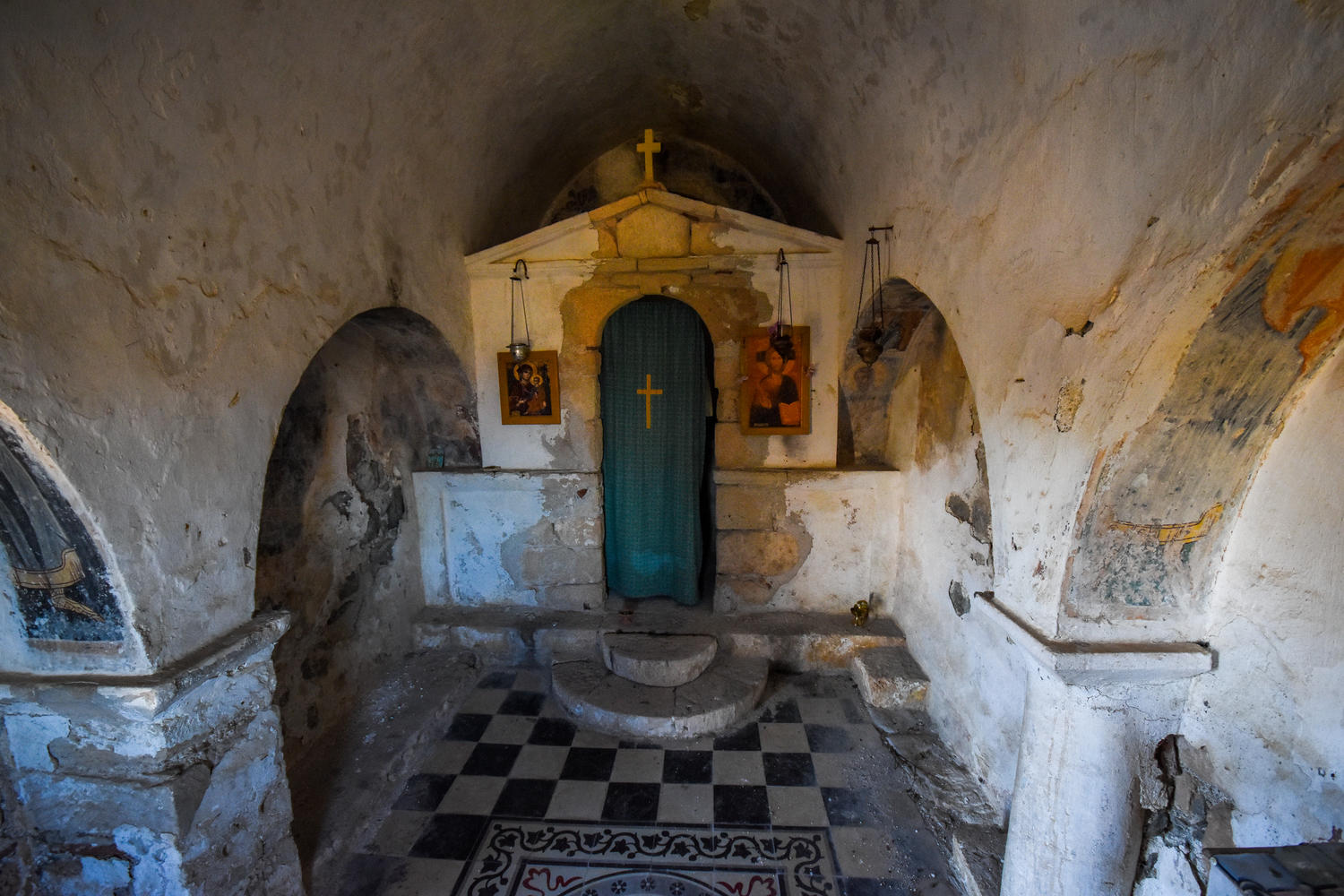
Fragments of frescoes in the most unsuspected places. I wonder how old they are? And who do they depict?

Often the frescoes are hidden, crumbled and faded, and it takes a lot of phantasy and imagination to make out anything.
Here, I wish I had taken a more detailed picture. I did think about the tripod, but since I always travel with hand luggage, I just didnt want to bring it, so this is what I managed with my fairly steady hands and 1000ISO.

The few people we met there were hikers, a lone woman on a scooter, and some old local people. I think the old people act as guardians, because I saw one unlocking a church, and many of them showed evidence of small-scale services, like incense or candles, and were immaculately swept clean. They are usually often to a saint, and range from double-nave churches to tiny chapels. I would say, about a third were open on our visit, and I would love to know if they are unlocked on a rotation system, or whether it’s possible to enquire with their guardians, or whether some remain permanently shut.
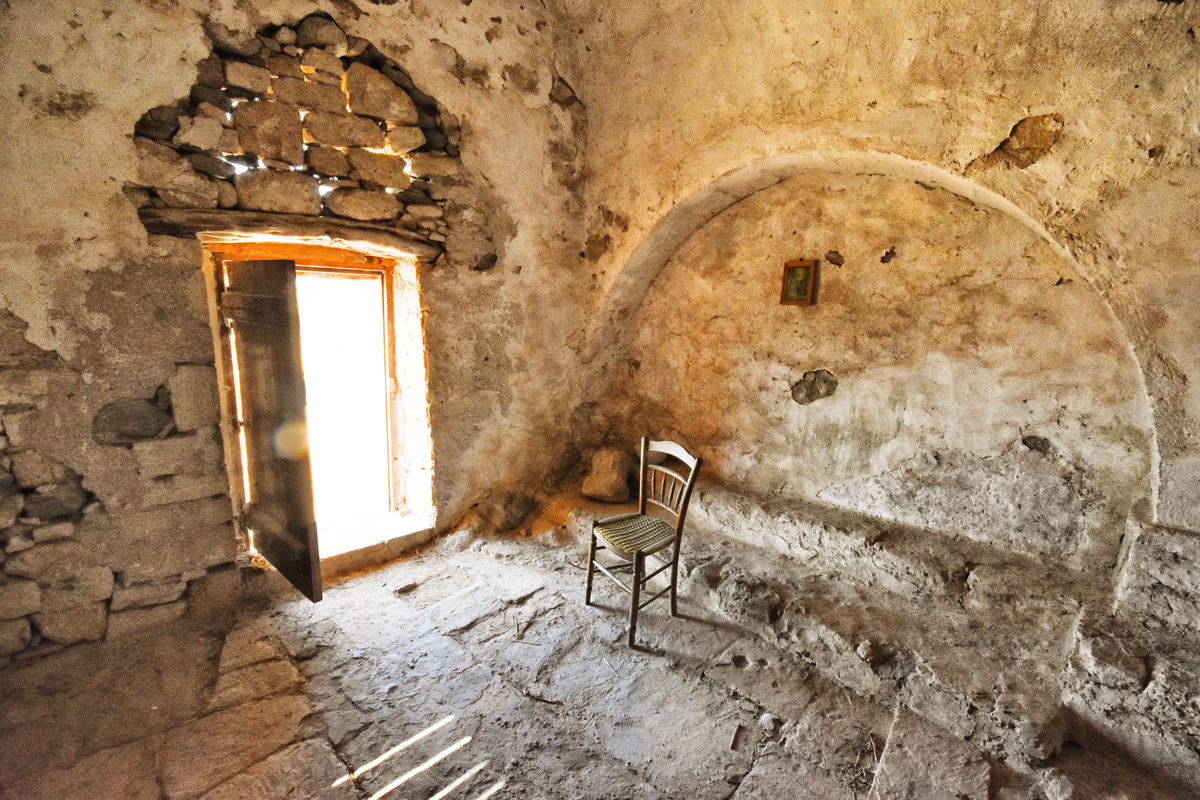
The congregation would have to be rather small, or standing room only.


Pretty much every chapel has a name displayed at its entrance. Of course, there were so many, we were climbing around, with me criss-crossing the hillside always looking for the next chapel, and the man just wishing to enjoy the view, so I didn’t photograph the signs. Oh well.




This one is from a double chapel on top of the hill. 
There are surprisingly few crucifixes in these Greek Orthodox chapels
The frescoes are supplemented by more modern icons on the side walls. 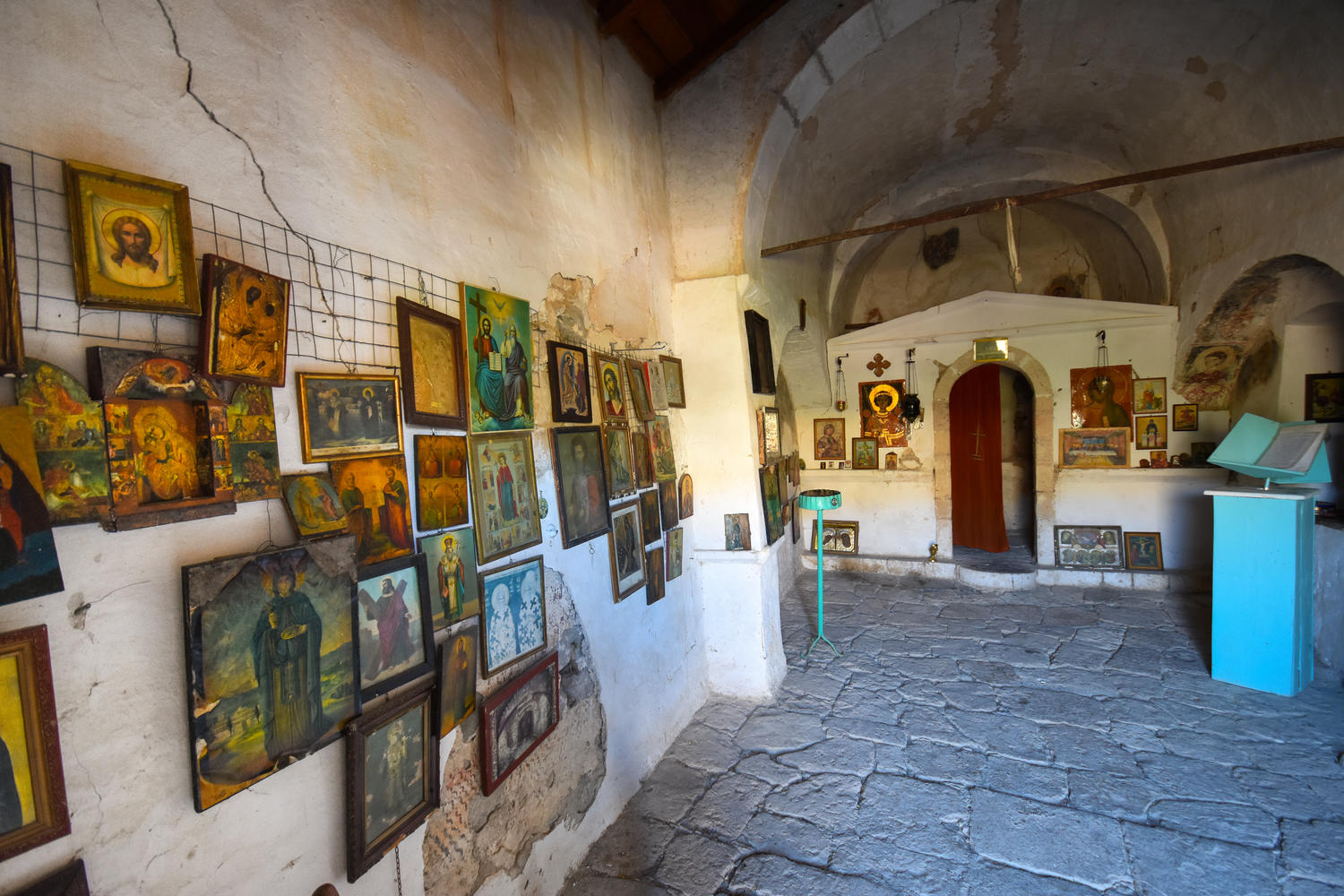
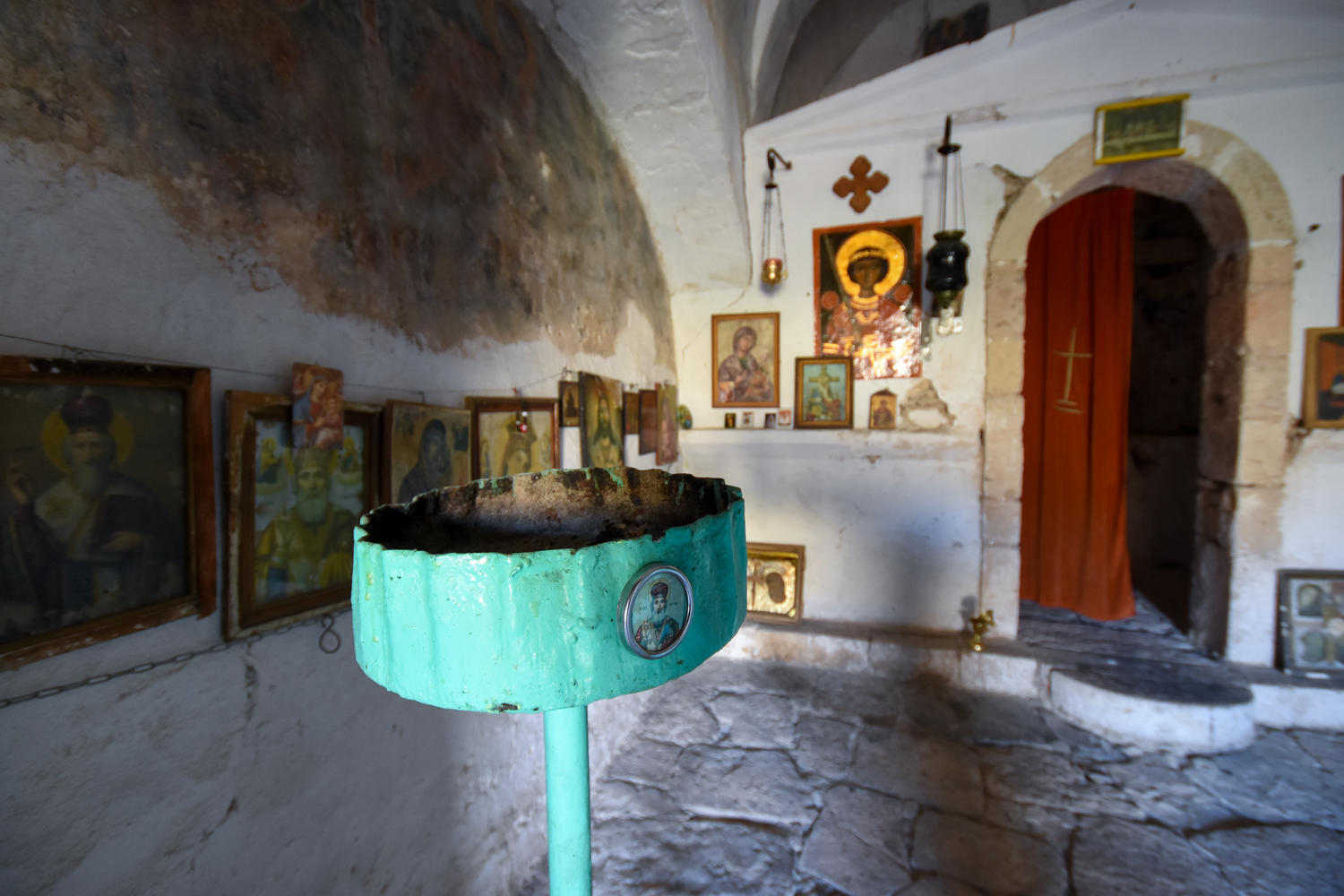
Here is another chapel with just fragments.


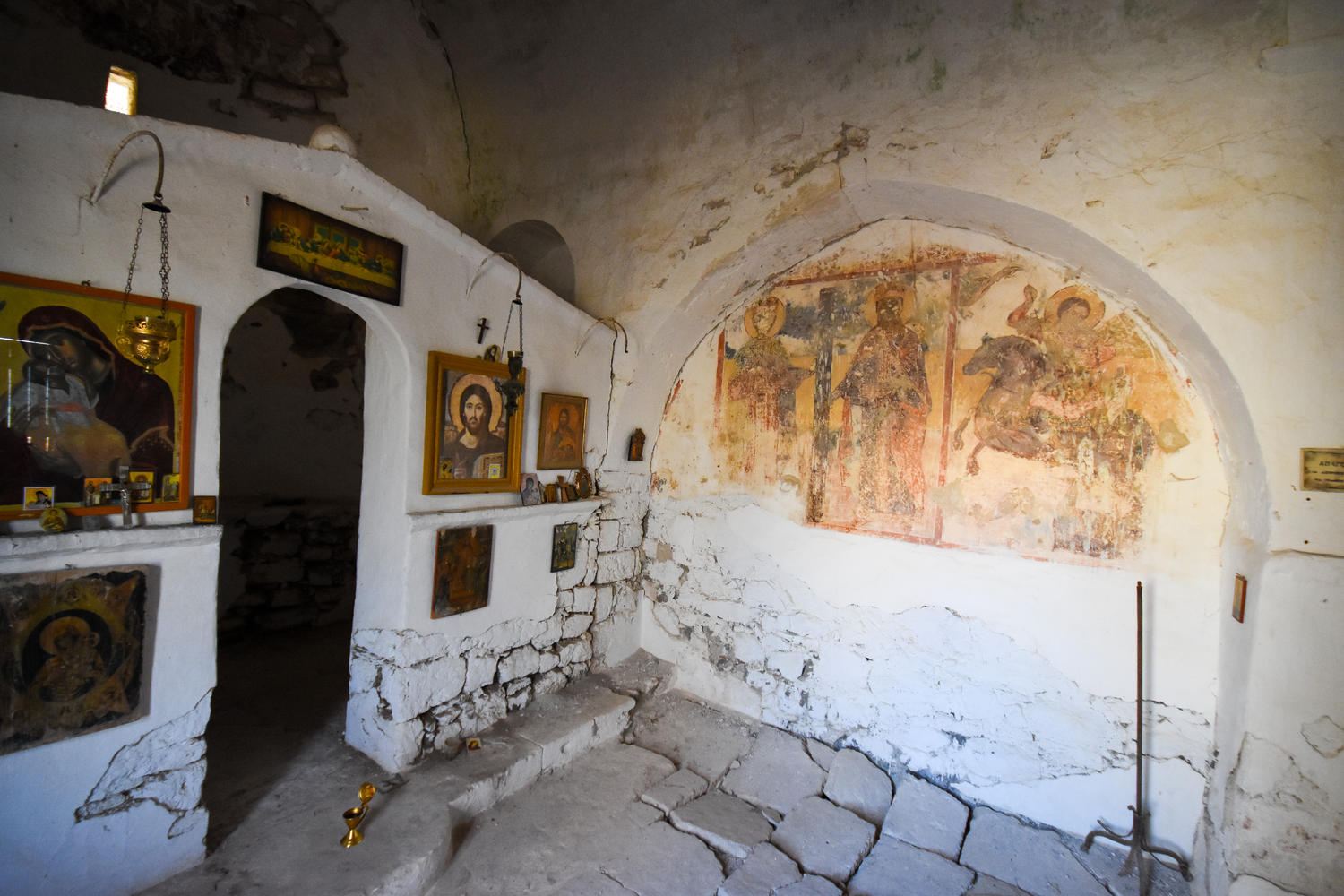
And another one! I really love this one, despite the fade and the many white spots. I had a go at deciphering the Greek letter fragments. Perhaps twin saints, of which there aren’t many?

OK. Twin saints flanked by their mates.

I didn’t write down the names of the saints they are dedicated to, although one can safely say this is probably St. George!
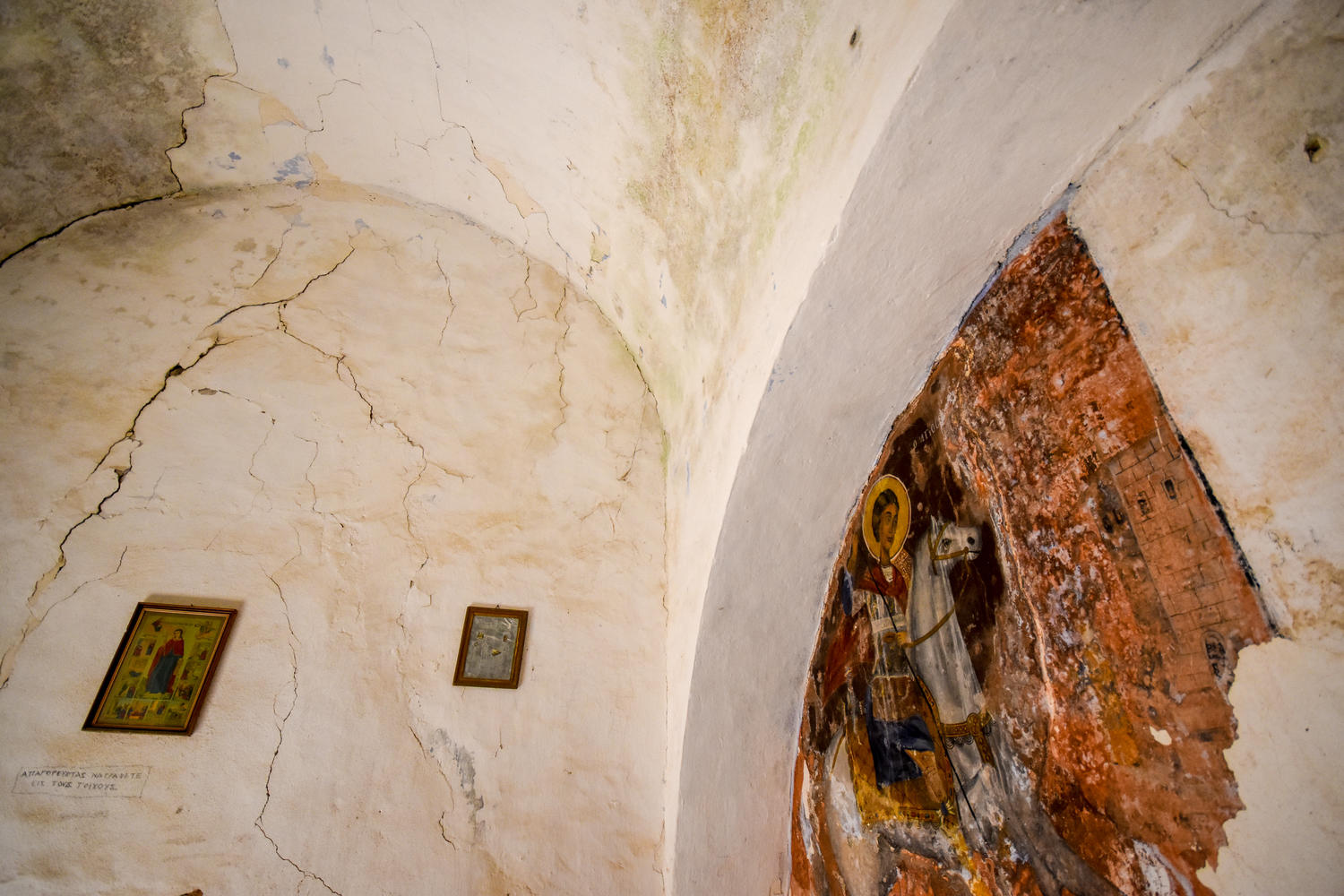

This is one of the last chapels we visited, quite los on the hill. What looks like a stuffed turkey is, possibly the draught of fish hauled by Jesus and his disciples (John 21). Maybe. 
I hope this pole isn’t meant to stabilise the entire stone and brick ceiling.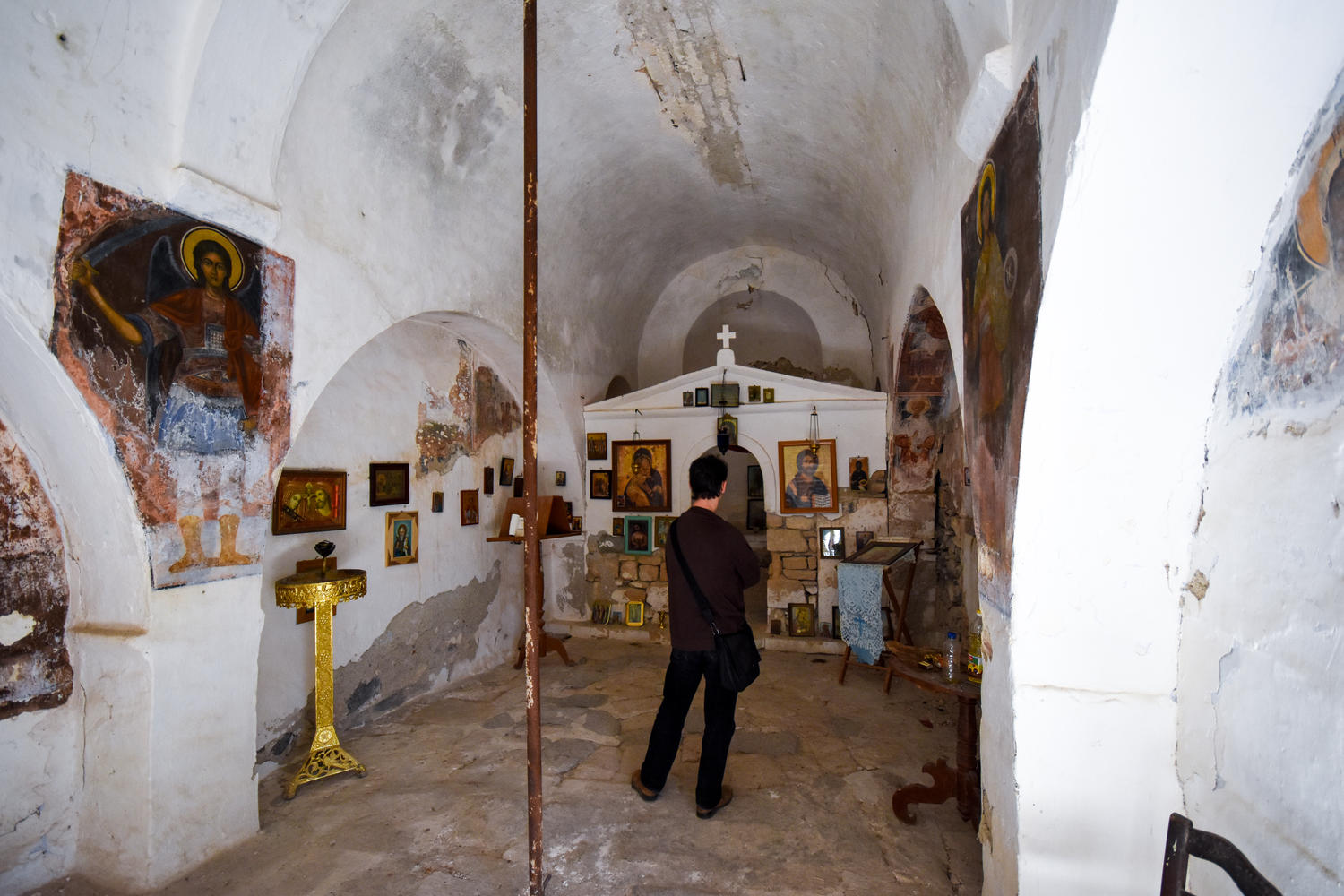
The chapels are built into the hillside in the centre of Aegina Island, and there appears to be some quarrying in the surrounding area – perhaps a reason why some of these building are really, really cracked. The views from the top are marvellous, even though you are not really that high up.
I don’t know how this compares with other “ghost towns” – I think this one is quite unique in that the town has vanished, but an unusually large number of churches and chapels have survived. If you have recommendation for similar places, please let me know!
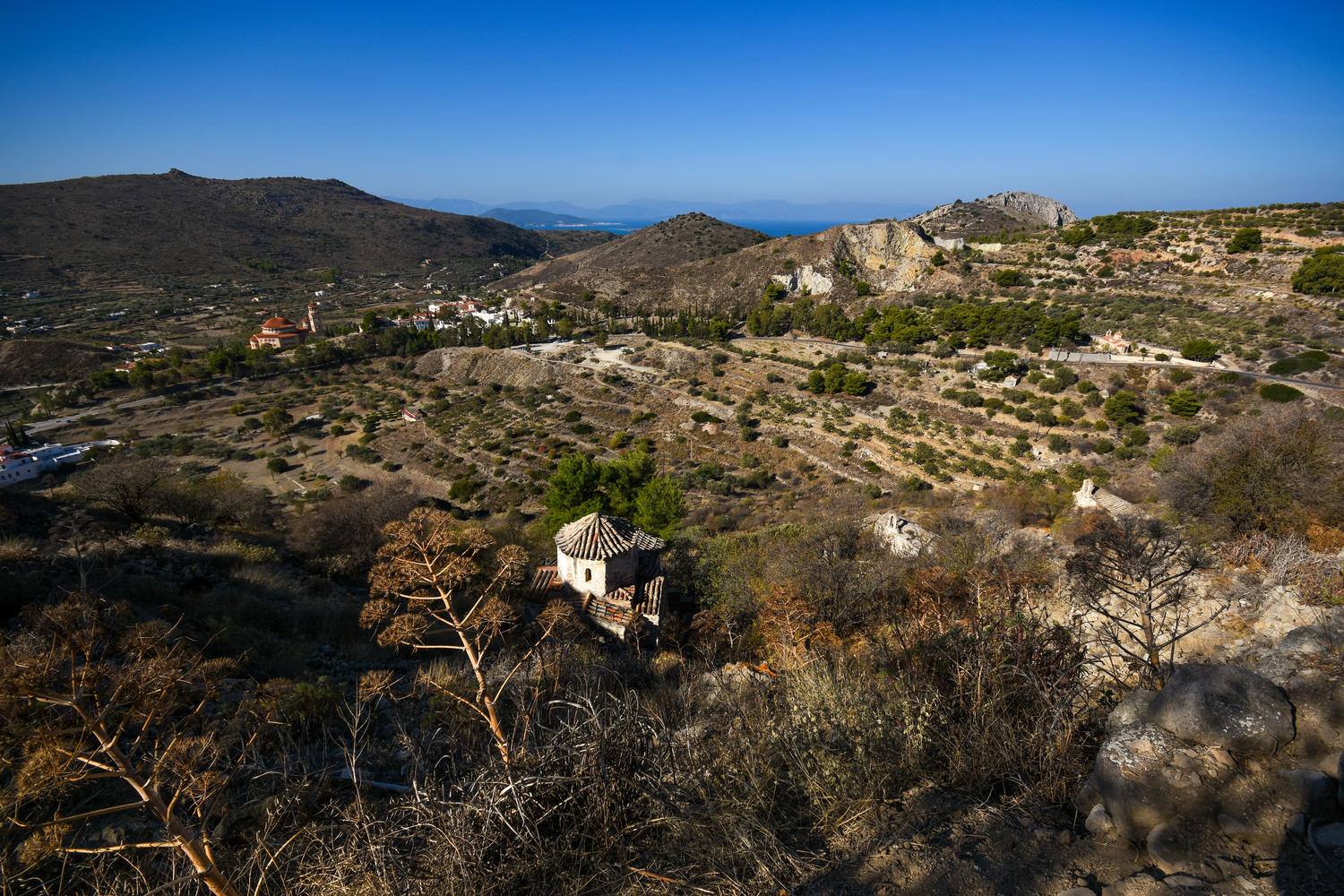
Practicalities
Getting there: Aegina Island is serviced by both ferries and Flying Dolphin hydrofoils from Piraeus. There are two or three daily buses which will drop off at St. Nektarios Monastery (you can see it in the background on the last photo) then it’s a 500m walk to the start of the trail. Alternatively, plenty of scooter rentals from 15 EURO as you step off the ferry and walk towards the promenade, as well as taxis waiting by the jetty. A taxi will cost approximately 15 EUROs one way, with fixed prices. If you take a morning departure from Piraeus, this can easily be done as a day trip.
Terrain: Its a relatively easy walk, though the path can be rough in places, so light hiking shoes are recommended. Apart from the chapels, there is almost no shade, and there are no facilities on site. St. Nektarios about 500m away has toilets and some very basic drinks/souvenir stalls. For food, I recommend returning to Aegina Town.
Best time to visit: I would recommend March to May and September to November, as this is shoulder season with lovely warm weather and no crowds. The site is accessible all year.
![]()